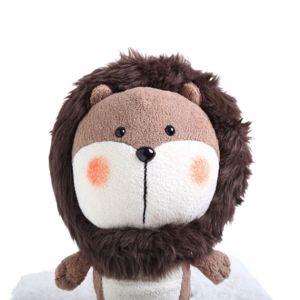What are the pollutants in the stuffed animal?Posted by May on December 21st, 2018 stuffed animals are one of the most popular types of toys for children. Not only is it loved by children, but it is also a popular item for adult interior decoration, such as pillow cushion plush toy (pillow cushion plush toys manufacturer). However, do you know that stuffed animals can also cause formaldehyde and bacterial contamination problems, and cause harm to people, especially children? The pollution hazards of selling stuffed animals mainly have the following three aspects: (1) Since the stuffed animal is a textile toy that children direct contact with the skin, the surface of the plush is easy to hide dust, bacteria, and formaldehyde, which may cause children's sensitivity and harmful health in children's play and contact. The most common case is that the bacteria on the toy cause the child to have diarrhea and a lung infection. (2) Because some toys are unclean, multiple children are also prone to cross-infection. In particular, there are some three-plus stuffed animals that use black cotton as a filler. These fillers contain harmful chemicals such as formaldehyde. When they are in contact with children, they can easily cause children to shed tears and erythema. In severe cases, they can also induce skin diseases. Or other infectious diseases. (3) Because formaldehyde can cause strong irritation to the human respiratory tract and skin, causing respiratory inflammation and skin inflammation. In addition, formaldehyde is a strong irritant to the skin and an initiator of various allergies. Formaldehyde-containing stuffed animals during the children's play, part of the free formaldehyde will be released, causing damage to children's health. Experts from the China Indoor Environmental Monitoring Committee analyzed that the formaldehyde in the stuffed animals mainly comes from the textiles on the surface of the toy. These textiles are added with additives such as finishing agents, fixing agents, water repellents, softeners, and binders containing formaldehyde. In addition, some unscrupulous manufacturers use black heart filling materials to contain harmful substances such as formaldehyde. The third measure: look at the filler. Good white stuffed animals use white PP cotton. If it is crushed during transportation, it is easy to recover. Pressing by hand is very flexible. Poor stuffed animals use black cotton, or less PP cotton, the filling is only half of a good stuffed animal, press by hand, the elasticity is much worse. The fourth measure: look at brands and businesses. Generally, the regular brand products, the quality is guaranteed, the channel control is stricter, and the large merchants purchase these guaranteed products. Largely stuffed animal suppliers usually maintain their own credibility, and the products they sell will have stricter quality control, and there will be no fake imitations. This is a further guarantee for consumers. Like it? Share it!More by this author |


